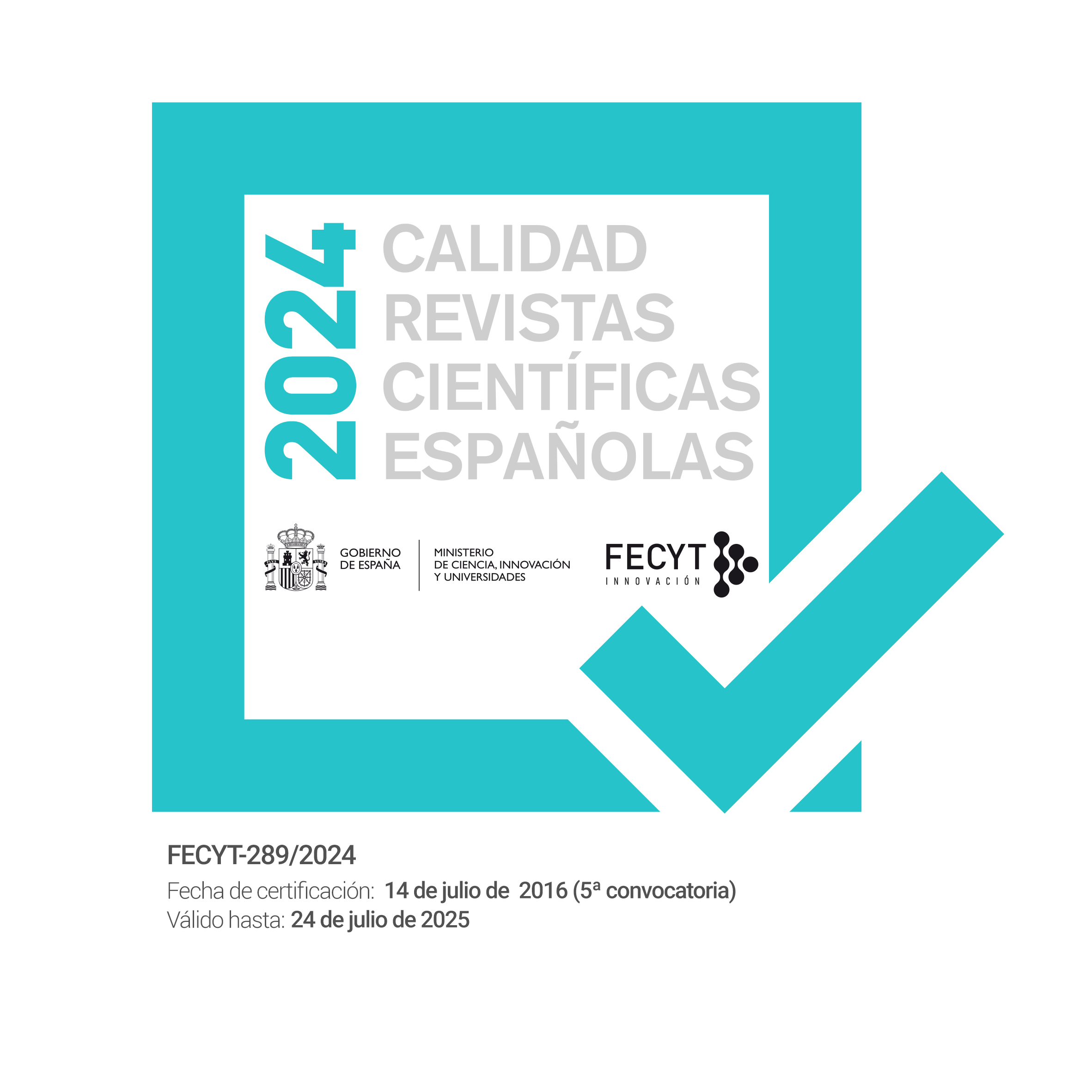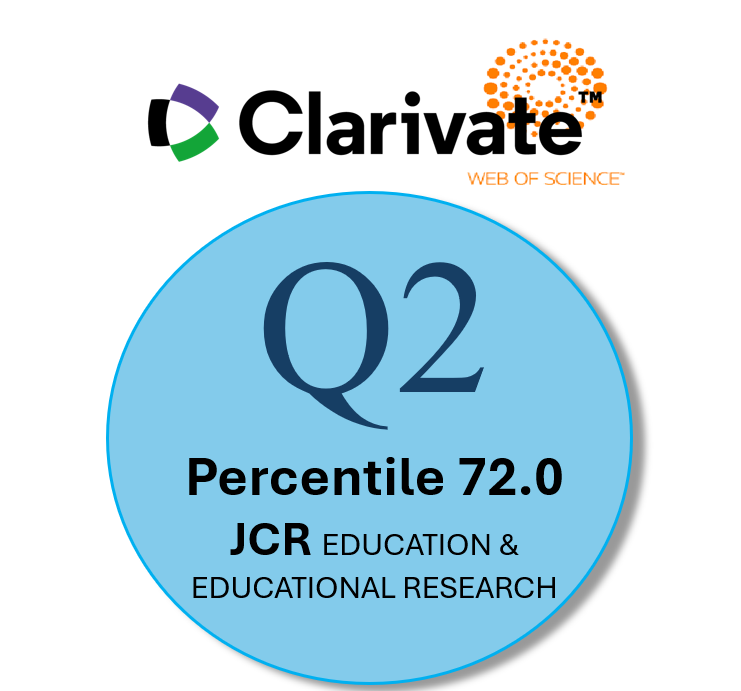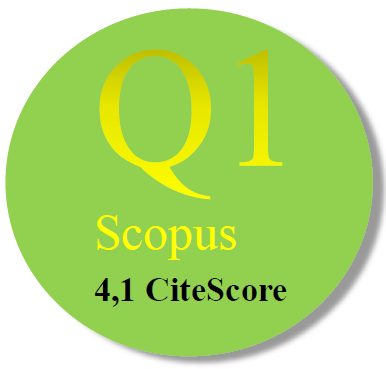Content analysis of research papers on flipped learning
Abstract
The purpose of this study is to describe the current state of research publication and trends in flipped learning, found on ‘Web of Science’ during the period 2014–2018. There are 262 papers investigated, published and indexed on ‘Web of Science’ with the keyword: “flipped learning” and “flipped classroom”. The results of the study are analysed according to the journal of publication by these criteria: author, countries, funding agencies, document types, languages, organisation, publication years and source title. Flipped learning changes the traditional lecturing by flipping the classroom in the sense of listening to the video lectures at home and doing dynamic, group-based activities in the classroom. This engages the students in active learning, critical thinking, and meliorates interpersonal skills.It is recommended to authors to explore the possibility of utilising this method, experimenting and publish the findings which allows to create best practices and a unified framework for leading instructors who want to adopt this teaching methodology.
Keywords: Flipped learning, flipped classroom, content analysis,
Downloads
-
Abstract1258
-
PDF843
References
Baggaley, J. (2016). Sandcastle competitions. Distance Education, 37 (3), 366 – 375.
Bagriyanik, S. & Karahoca, A. (2016). Personal learning environments: a big data perspective. Global Journal of Computer Sciences: Theory and Research, 6(2), 36–46.
Bektas, C. & Fayad, R. (2017). Learning framework using social media networks. Global Journal of Information Technology: Emerging Technologies, 7(1), 8–13. https://doi.org/10.18844/gjit.v7i1.1933
Bergmann, J. & Sams, A. (2012). Flip your classroom: reach every student in every class every day. Washington, DC: International Society for Technology in Education. 120 – 190.
Birkollu, S. S., Yucesoy, Y., Baglama, B. & Kanbul, S. (2017). Investigating the attitudes of pre-service teachers towards technology based on various variables. TEM Journal, 6(3), 578–583.
Bishop, J. & Verlegher, M. (2013). The flipped classroom: a survey of the research. Proceedings of 120 ASEE Annual Conference & Exposition, Atlanta, GA: American Society for Engineering Education.
Ceker, E. & Ozdamli, F. (2016). Features and characteristics of problem-based learning. Cypriot Journal of Educational Sciences, 11(4), 195–202. https://doi.org/10.18844/cjes.v11i4.1296
Charoento, M. (2017). Individual learner differences and language learning strategies. Contemporary Educational Researches Journal, 7(2), 57–72. https://doi.org/10.18844/cerj.v7i2.875
Cupal, M. (2016). Price Adjustments of Price-setting Factors under Sales Comparison Approach (SCA). Global Journal of Business, Economics and Management: Current Issues, 6(2), 164-170. https://doi.org/10.18844/gjbem.v6i2.1381
Gall, J. E., Ku, H. Y., Gurney, K., Tseng, H. W. & Yeh, H. T. (2004). An analysis of citation patterns in ETR&D. In Proceedings of Association for Educational Communications & Technology (AECT) conference, Chicago, IL, October 19-23, 2004.
Giannakos, M. N. & Chrisochoides, N. (2014). Challenges and Perspectives in an Undergraduate Flipped Classroom Experience: Looking through the Lens of Analytics, 44th IEEE Frontiers in Education Conference (FIE).
Genc, Z. & Ozcan, D. (2017). Department preference motivations of teacher candidates studying in gifted education department. Ponte, 73(5), 175–184.
Giannakos, M. & Krogstie, J. (2014). Reviewing the flipped classroom research: reflections for computer science education. Conference CSERC ‘14. 23 -29. Trondheim, Norway.
Greener, S., Watson, C. (2015). Flipped or Blended? What's the Difference and Does it Make a Difference to Learning in HE? Proceedings of the 10th International Conference On E-Learning (ICEL 2015), Nassau, The Bahamas.146 – 151.
Gursakal, N. & Bozkurt, A. (2017). Identifying gatekeepers in online learning networks. World Journal on Educational Technology: Current Issues, 9(2), 75–88. https://doi.org/10.18844/wjet.v9i2.1277
Hao, Y. W. (2016). Exploring undergraduates’ perspectives and flipped learning readiness in their flipped classrooms. Computers in Human Behavior, 59, 82–92.
Hsieh, J. S. C., Huang, Y. M. & Wu, W. C. V. (2017). Technological acceptance of LINE in flipped EFL oral training. Computers in Human Behavior, 70, 178–190.
Howell, R. (2016). Making the Most of a One Hour Lecture with Alternative Teaching Methodologies: Implementing Project-Based and Flipped Learning. 58th Annual Meeting and Exhibition of the American-Association-of-Physicists-in-Medicine (AAPM). 43 (6).
Huang, C.K. & Lin, C.Y. (2017). Flipping Business Education. Educational Technology & Society, 20 (1), 323 – 336.
Kanbul, S. & Uzunboylu, H. (2017). Importance of coding education and robotic applications for achieving 21st-century skills in North Cyprus. International Journal of Emerging Technologies in Learning, 12(1), 130–140.
Karadag, R., & Keskin, S. (2017). The effects of flipped learning approach on the academic achievement and attitudes of the students. New Trends and Issues Proceedings on Humanities and Social Sciences, 4(6), 158-168. https://doi.org/10.18844/prosoc.v4i6.2926
Kissi, P. (2017). Proposed flipped classroom model for high schools in developing countries. New Trends and Issues Proceedings on Humanities and Social Sciences, 4(4), 150-158. https://doi.org/10.18844/prosoc.v4i4.2607
Kukey, E., Gunes, H., & Genç, Z. (2019). Experiences of classroom teachers on the use of hands-on material and educational software in math education. World Journal on Educational Technology: Current Issues, 11(1), 74-86. https://doi.org/10.18844/wjet.v11i1.4010
Lage, M. J., Platt, G. J., & Treglia, M. (2000). Inverting the Classroom: A Gateway to Creating an Inclusive Learning Environment. The Journal of Economic Education, 31 (1), 30-43.
Liao, P., Wang, L., June, J., Lee, Ch., Okuhara, K., & Yang, H. (2014). Flipped Learning: Integrating Community Language Learning with Facebook via Computer and Mobile Technologies to Enhance Learner Language Performances in Taiwan. CT International Multidisciplinary International Social Networks Conference (MISNC) Kaohsiung, TAIWAN, 473, 92 – 101.
Luker, C., Muzyka, J., & Belford R. (2015). Introduction to the Spring 2014 ConfChem on the Flipped Classroom. Journal of Chemical Education, 92 (9), 1564 – 1565.
Ozcinar, Z., (2009). The topic of instructional design in research journals: A citation analysis for the years 1980-2008. Australasian Journal of Educational Technology, 25(4), 559-580.
Rozano, M. & Romero, J. (2016). Skill acquisition in blended learning courses: influence on student performance. International Journal of Learning and Teaching, 8(1), 30–39. https://doi.org/10.18844/ijlt.v8i1.372
Tao, S.Y., Huang, Y.H. & Tsai, M.J. (2016). Applying the Flipped Classroom with Game-based Learning in Elementary School Students' English Learning. 5th International Conference on Educational Innovation through Technology (EITT), Tainan, Taiwan, 59 – 63.
Tsai, C.W., Shen, P.D., Chiang, Y.C. & Lin, C.H. (2017). How to solve students' problems in a flipped classroom: a quasi-experimental approach. Universal Access in The Information Society, 16 (1), 225 – 233.
Umutlu, D., & Akpınar, Y. (2017). Effects of different video modalities in flipped english writing classes on students’ writing scores. New Trends and Issues Proceedings on Humanities and Social Sciences, 3(7), 60-66. https://doi.org/10.18844/prosoc.v2i7.1986
Uzunboylu, H., Hursen, C., Ozuturk, G. & Demirok, M. (2015). Determination of Turkish University students’ attitudes for mobile integrated EFL classrooms in North Cyprus and scale development: ELLMTAS. Journal of Universal Computer Science, 21(10), 1283–1296.
Uzunboylu, H. & Kocakoyun, S. (2017). A content analysis of master and doctorate thesis in the area of gamification. International Journal of Innovative Research in Education, 3(3), 143–154. https://doi.org/10.18844/ijire.v3i3.1855
Uzunboylu, H, Karagozlu D. (2015). Flipped classroom: A review of recent literature. World Journal on Educational Technology: Current Issue, Vol 7(2) https://doi.org/10.18844/wjet.v7i2.46
Uzunboylu, H., & Cumhur, M. (2015). The content analysis of the computer-assisted studies in mathematics education between the years 2009-2014/April. International Journal of Learning and Teaching, 7(2), 62-72. https://doi.org/10.18844/ijlt.v7i2.170
Wu, W. C. V., Hsieh, J. S. C. & Yang, J. C. (2017). Creating an online learning community in a flipped classroom to enhance EFL learners’ oral proficiency. Educational Technology & Society, 20(20), 147–157.
Copyright (c) 2020 Distance Education Journal

This work is licensed under a Creative Commons Attribution-NonCommercial 4.0 International License.
Las obras que se publican en esta revista están sujetas a los siguientes términos:
1. El Servicio de Publicaciones de la Universidad de Murcia (la editorial) conserva los derechos patrimoniales (copyright) de las obras publicadas, y favorece y permite la reutilización de las mismas bajo la licencia de uso indicada en el punto 2.
2. Las obras se publican en la edición electrónica de la revista bajo una licencia Creative Commons Reconocimiento-NoComercial-SinObraDerivada 3.0 España (texto legal). Se pueden copiar, usar, difundir, transmitir y exponer públicamente, siempre que: i) se cite la autoría y la fuente original de su publicación (revista, editorial y URL de la obra); ii) no se usen para fines comerciales; iii) se mencione la existencia y especificaciones de esta licencia de uso.
3. Condiciones de auto-archivo. Se permite y se anima a los autores a difundir electrónicamente las versiones pre-print (versión antes de ser evaluada) y/o post-print (versión evaluada y aceptada para su publicación) de sus obras antes de su publicación, ya que favorece su circulación y difusión más temprana y con ello un posible aumento en su citación y alcance entre la comunidad académica. Color RoMEO: verde.













